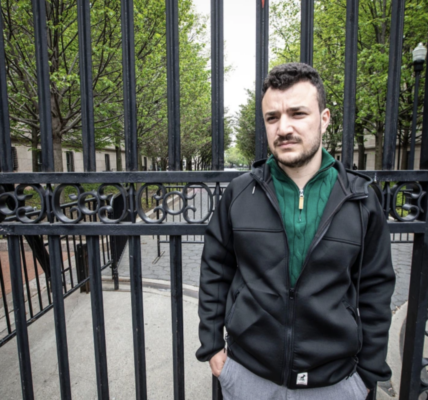TOPEKA, Kansas
A destructive dust storm produced an enormous traffic collision on Interstate 70 west of Kansas, which took eight lives last week. Nothing predicted the sudden storm that merged with a wall of dust, which limited visibility so much that fifty vehicles crashed into one another. The New Mexico region experienced parallel road closure conditions following observations, which prevented further accidents from happening.
The Dangers of Dust Storms
Dust storms regularly appear to be a dangerous phenomenon within the western United States, especially throughout the Great Plains region. Strong winds lift loose soil into thick airborne dust, which causes severe conditions for drivers. A similar dust storm struck Kansas this year, just like all the towns were buried by soil during the Dust Bowl of the 1930s.
Meteorologists confirm that these storms become lethal because they tend to appear abruptly, which reduces the time drivers have to respond. Daniel Tong, who serves as an associate professor at George Mason University, states that public knowledge about dust storm risks stays minimal. Between 2007 and 2017, windblown dust events resulted in the deaths of 232 people, which exceeded the previous recorded numbers.
How the Kansas Pileup Unfolded
The weather reports show a cold front emerged in Kansas after six hours of dry, warm conditions followed by stormy weather. The temperature drop, combined with winds reaching 70 mph (113 kph), formed a powerful dust wall that blocked the road. When vehicles ahead stopped because of limited visibility, those behind them kept moving, thus starting the series, which resulted in fatal chain reactions.
The Kansas Highway Patrol confirmed that 71 vehicles became entangled in the accident, with multiple semi-trucks among them. The aerial recordings showed the aftermath of the accident, which featured ruined automobiles tossed among extensive wreckage on the roadway.
Lessons from the Disaster
- Driving Safety During Dust Storms
- Drivers need to make safe road pull-offs followed by total lighting cutoff and beam light disabled use.
- It is dangerous to stop in a driving lane because following motorists will believe that the road extends indefinitely based on your vehicle’s taillights.
- Better Public Awareness & Education
- The inclusion of dust storm safety training within driving license requirements finds support from the expert community.
- To prevent deadly dust storm incidents, government agencies should organize additional broadcasts that teach drivers the appropriate actions to take in these emergencies.
- Environmental & Policy Considerations
- The occurrence of dust storms decreases when land management practices maintain adequate ground cover on the surface.
- Government bodies should enhance their warning procedures and monitoring systems to stop these catastrophes from happening.
The fatal Kansas highway accident demonstrates the destructive nature of dust storms that threaten road safety. Better awareness, together with preparation efforts and the implementing of appropriate policies, will make it possible to save lives in future dust storms. Drivers must stay alertandh be prepared for the risks that exist in these dangerous regions.





